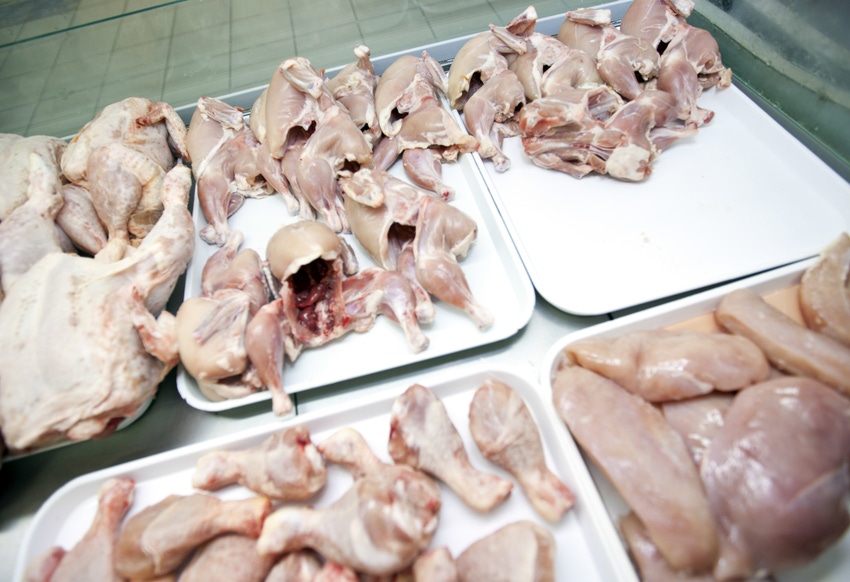Team will create new products to increase value of breast meat with woody breast and other myopathies.
July 24, 2020

Over time, the U.S. poultry industry has bred strains of birds that grow rapidly to meet consumer demand for chicken products — especially breast meat — but that rapid growth has led to a higher incidence of muscle tissue defects that could lead to revenue loss, according to the University of Georgia.
A team of University of Georgia and U.S. Department of Agriculture poultry scientists have now received a Critical Agricultural Research & Extension (CARE) grant from USDA to help develop ways to use chicken meat with these tissue defects that increase sustainability and profitability.
Tthe team, led by Harshavardhan Thippareddi, the John Bekkers professor of poultry science in the University of Georgia College of Agricultural & Environmental Sciences (CAES), has received a $300,000 grant from USDA’s National Institute of Food & Agriculture to support their work.
“The basic problem is that when the birds start growing to a certain size, approximately 9 lb. or higher, the breast meat can develop myopathies that effect texture,” Thippareddi said. “There are many factors that can contribute to this, including the strain of bird and the growth rate. In the poultry industry, a significant proportion of the birds produced are 9 lb. or larger because they are used for breast filet meat that is used in products such as chicken sandwiches or nuggets in restaurants.”
The most common breast meat myopathies are white striping, woody breast and spaghetti meat. These have become a serious concern for the poultry industry, affecting up to 20% of breast meat, which could create a significant economic loss if that meat is not used, the university said.
While the texture of the meat is affected — "woody breast" describes bulging and areas of hardened consistency, and "spaghetti meat" describes separated fiber bundles in the breast meat — nutritionally there is little difference in the meat, but it can’t be used as breast fillets. White striping is primarily an aesthetic issue that causes the appearance of white striations in the breast meat. These myopathies are easily identified when birds are processed.
“USDA inspects all of the meat processed for human consumption for safety and wholesomeness. When processors harvest chickens, they inspect every bird to determine if it is edible or inedible, and this is when these defects are identified,” Thippareddi said. “With woody breast, spaghetti meat or white striping, there is nothing wrong with the meat; it is just a matter of texture. Just like when you buy ground beef for hamburgers, you know that is not made from the best quality steak. With pork chops, you want to use the loin rather than the shoulder. It is a matter of using the right cuts for the proper use.”
The University of Georgia-USDA team will work to create new products that will increase the value of breast meat with white striping, woody breast or spaghetti meat so that it is not relegated for use in lower-value products such as animal feed.
“We can include this meat into high-value processed products, like all-chicken hot dogs, and enhance its economic value,” Thippareddi said. The meat can also be used to create poultry versions of sausages that are made primarily with higher-fat meats such as pork or beef.
“With chicken sausages, you are distributing that higher fat and collagen across the product by grinding the meat, so you can use 20-50% woody breast meat without impacting the texture of the product,” he said. “So, instead of throwing away the value of that meat, the processor can retain its value. They grew the birds, took care of them and fed them, and losing 20% of the meat means a loss of sustainability. We can address that.”
The team will spend three years developing products that will both have high consumer appeal and are more profitable for producers, the announcement said.
“We can do the research and give that information to the processors and show them how they can derive value out of the woody breast or spaghetti meat that occurs. Right now, they are losing money on this, but we can create products that add value for the processors, so it helps the poultry industry,” he added.
Thippareddi has spent his research career focused on improving productivity, processing yields and using underutilized poultry meats while assuring the quality and microbiological safety of poultry and poultry products.
“The goal is to make chicken as visible out there on the grocery shelves as beef and pork sausages and other products,” he said.
Collaborators on the project include University of Georgia meat science researchers Alexander Stelzleni and Dean Pringle in the department of animal and dairy science and scientists Brian Bowker and Hong Zhuang with USDA's National Poultry Research Center.
In addition to developing new products, the grant also covers outreach and education efforts with industry members through webinars and workshops to increase poultry processor awareness and to help the poultry meat industry increase profitability and enhance long-term sustainability.
You May Also Like


.png?width=300&auto=webp&quality=80&disable=upscale)
